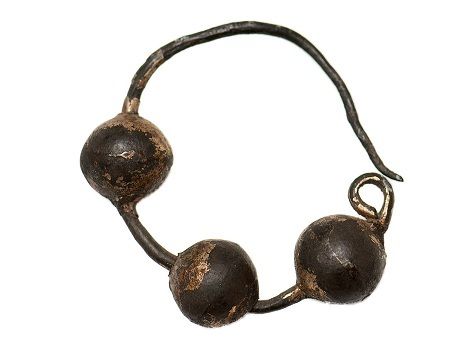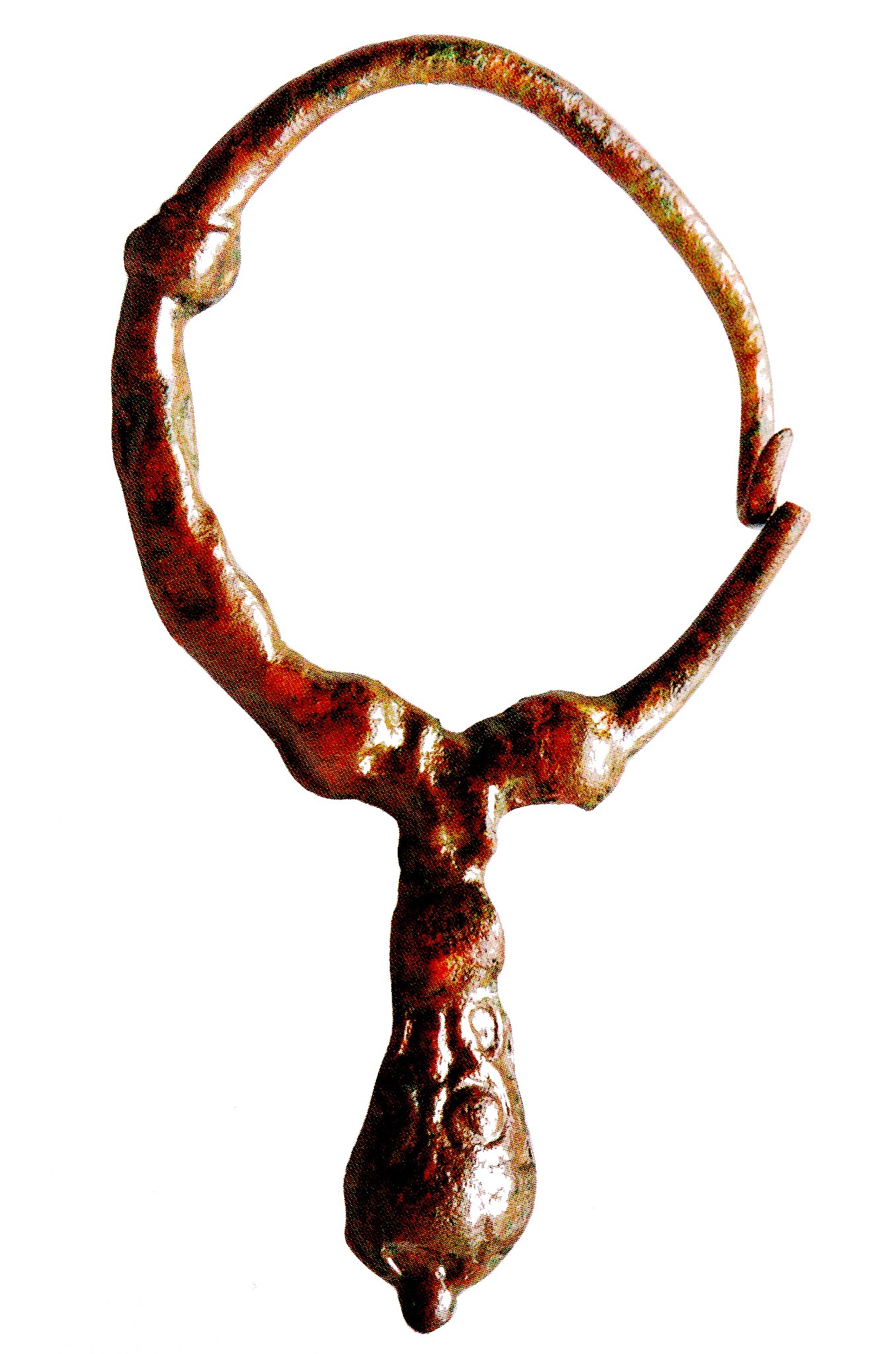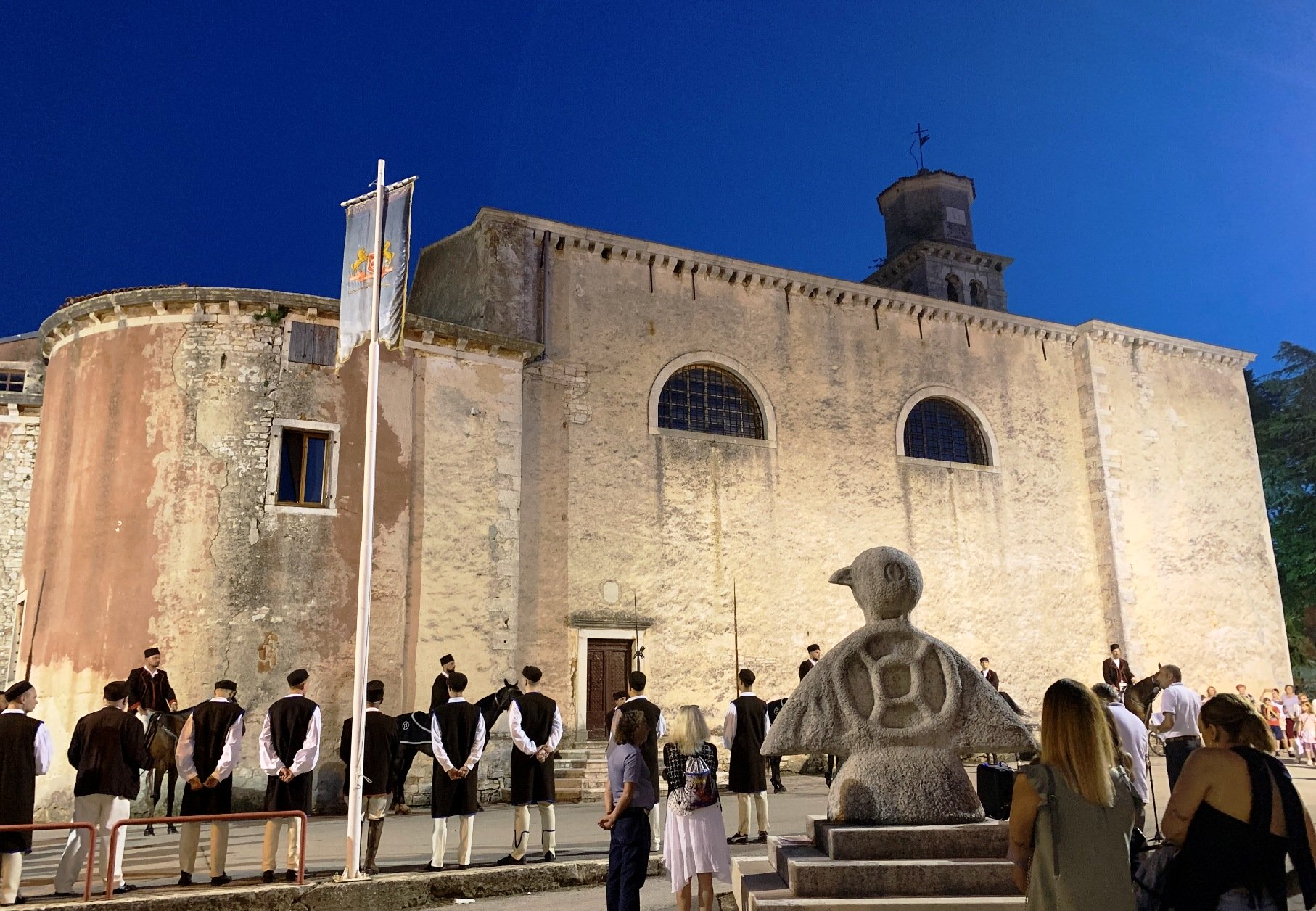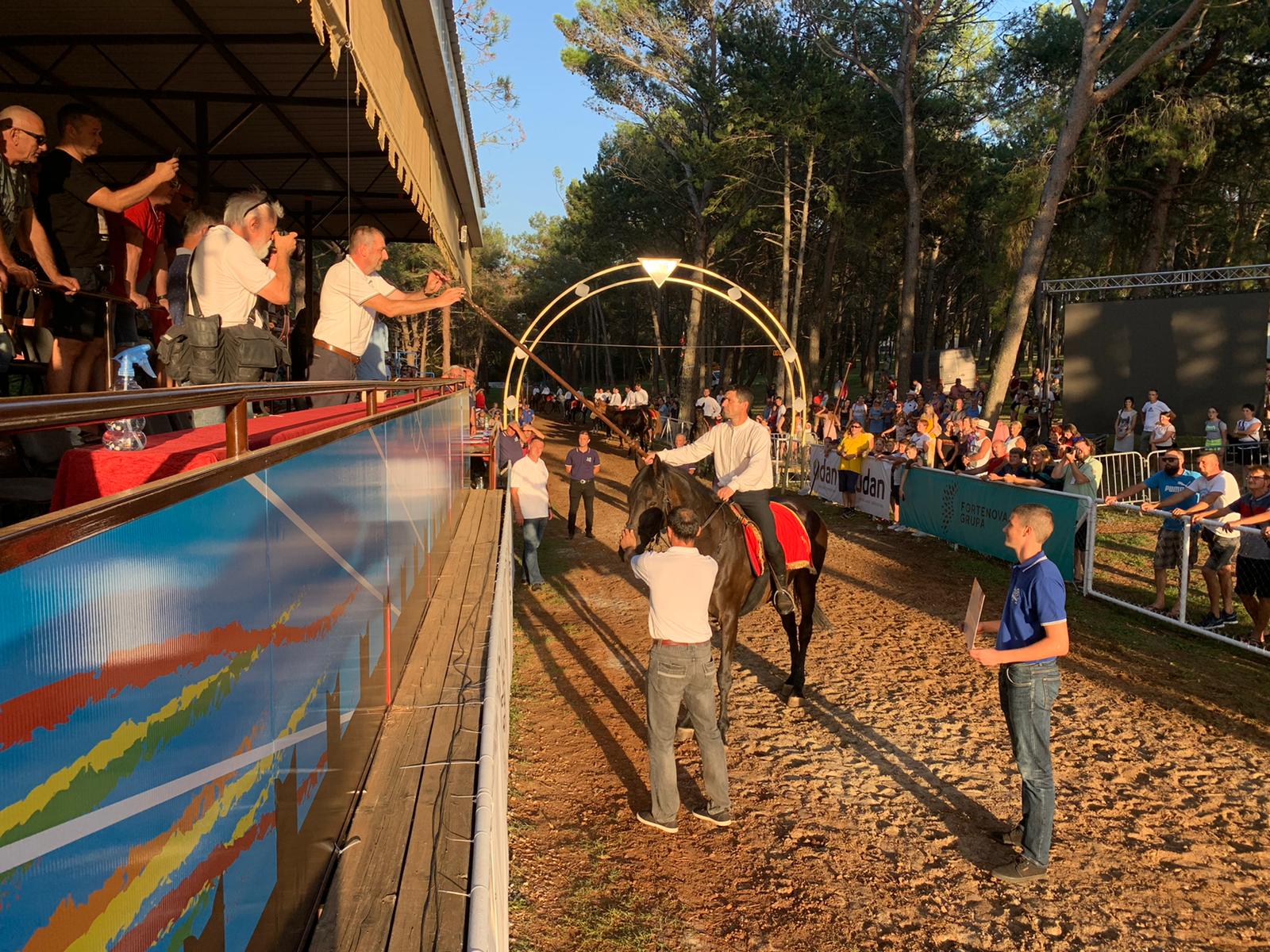Croatian Traditional Jewellery: Istria's Medieval Earrings, Rediscovered
February 25th, 2022 - Medieval earrings discovered on several archaeological sites in Istria served as inspiration for authentic souvenirs: beautiful replicas in silver and gold, made by local artisans
Our ancestors seem to have loved shiny things as much as we did: traditional garb in all parts of Croatia included precious jewellery pieces such as earrings, bracelets, brooches and pendants.
Some date back to medieval, ancient or even prehistoric times, and are nowadays displayed as museum exhibits. Others have stood the test of time, with traditional motifs passed down from generation to generation and remaining popular accessories to this day.
And then there’s some traditional jewellery that falls into both these categories. Medieval earrings found on several archaeological sites in Istria were rediscovered in recent times and recreated with beautiful replicas in silver and gold, made by local artisans and whoheartedly embraced by the public.
The initiative to revive the ancient heritage of Istria in the form of jewellery largely came from goldsmith Klaudija Vorić, owner of Claudia Zlato jewellery shop in Svetvinčenat, now closed. Since the early 2000s, Vorić had been making jewellery inspired by traditional Istrian symbols. About ten years ago, she launched the initiative to make replicas of historic earrings in order to create high quality souvenirs for each given destination in cooperation with local authorities and relevant tourist boards. Vorić was the one responsible for the revival of Žminj, Buzet and Barban earrings on this list, and it's only right we give credit where credit is due.
Join us on a little themed tour of Istria as discover accessories of times past that now have their modern versions, readily available to all who wish to wear a piece of history.
Žminj earrings / Žminjski rićin
It’s said that all the roads in Istria lead to Žminj, so it only makes sense to start our journey in this picturesque inland town.
Earrings and rings were uncovered at the early Croatian cemetery in Žminj, showing that the local women used to wear jewellery as early as in the 9th century. How’s that for tradition?

The earrings found at the necropolis were part of the rural folk costume worn in the Žminj area in the 9th and 10th centuries. They were made of silver and bronze and are grouped into several categories according to design and origin, with the most prominent type featuring so-called ‘strawberries’, hollow granules made of silver with elements of filigree and mesh. Some feature closed hoops, pointing to the fact they were most likely worn interwoven in hair or looped on hair strings.
Nowadays, the original finds are kept at the Archaeological Museum of Istria in Pula. They inspired a beautiful authentic souvenir, the Žminjski rićin (Žminj earring), designed after the medieval pieces and slightly modified to fit modern standards of jewellery wear.

The gorgeous pieces are nowadays made of silver and gold, and are manufactured in Pula by David jewellery.
In Žminj, earrings and rings are available for sale at the floral studio Heidi as a unique tourist souvenir, complete with a leaflet introducing the history of the Žminj jewellery in three languages.
 Žminj rings / Zlatarna David Facebook
Žminj rings / Zlatarna David Facebook
Barban earrings / Barbanski rančin
Earrings dating to the 11th century were unearthed in the small town of Barban. The medieval earrings have the form of a hoop with three small beads adorning the bottom part.
Similar to the ones found in Žminj, they were determined to be a part of folk costume typical for the period between the 11th century, when Istria was a part of the Holy Roman Empire, to the beginning of the 14th century when the region was taken over by the Venetian Republic.

Medieval Barban earring / Archaeological Museum of Istria
The initiative to bring the traditional Barban earrings into the modern era was also launched by Claudia Zlato jewellery, with the project devised by Jasminka Benazić and executed in cooperation with the Archaeological Museum of Istria, the Municipality of Barban and the Barban Tourist Board.
 Barban earring / Zlatarna David Facebook
Barban earring / Zlatarna David Facebook
The result are beautiful wearable earrings, made in several sizes and materials and inspired by the cultural heritage of Barban.
Dvigrad earrings / Rančin Dvegrajka
On to Dvigrad, a ruinous medieval town in Limska Draga valley, where two unique types of earrings were discovered, made of bronze and dating to the 9th century.
Both types are simple hoops, one with a thin wire wrapped around the bottom part (see image below), the other adorned with a bead. Several other kinds of earrings were found in the Dvigrad area, but since they share features with various types discovered on archaeological sites elsewhere in Istria, it was decided to only make replicas of the two designs unique to Dvigrad.
The wearable souvenirs are made by David jewellery from Pula, whose owner, goldsmith Luiđi Đinić, said it takes up to five hours to make a single pair. The delicate hoops are entirely handmade, and available in silver, silver-gilt, and silver gilded rose gold versions.
Like the other artefacts, the historic Dvigrad earrings are kept at the Archaeological Museum of Istria and were declared a cultural asset of the Republic of Croatia back in 1968.
Buzet earring / Buzetska naušnica
Delicious truffles aren’t the only precious thing found in the north of Istria, as the history of the hilltop town of Buzet and its environs goes all the way back to the Bronze Age.
It doesn’t come as a surprise that beautiful historic jewellery was discovered in Buzet as well, a type of bronze earring dating to the 7th century and known as the Buzet earring in archaeological literature.
 Medieval Buzet earrings / Buzet Tourist Board
Medieval Buzet earrings / Buzet Tourist Board
Bronze earrings are most commonly found at the early medieval burial grounds of the native population and the Illyrian-Celtic people who inhabited the area between Buzet and the west coast of Istria.
The original pieces are kept at the Regional Museum of Buzet, and a silver replica was created as an authentic souvenir of Buzet. Two kinds are available, one being a near identical copy of the medieval earrings, other slightly modified and equipped with a clasp to be more easily wearable.
 Buzet earring / Buzet Tourist Board
Buzet earring / Buzet Tourist Board
Umag earrings / Umaška naušnica
We’ll end our little tour in Umag, a coastal town in the north-west of Istria. Although best known for the ATP tournament, Umag has much more to boast, including priceless historic finds such as the so-called Umag earring.
The bronze earring is shaped as an elliptical hoop adorned with three beads and a large engraved pendant, altogether cast in a one piece mold. It was found during archaeological research conducted in Umag in 2005, at the ruins of an early medieval church that burned down in the 9th century.

A silver replica was made by the local goldsmith and filigree master Njaci Široka, creating an original Umag souvenir that is available for sale in his shop.
46th Edition of Prstenac Tournament Started With Flag Hoisting
ZAGREB, 21 Aug, 2021 - The 46th edition of the traditional three-day Prstenac tournament started in the Istrian town of Barban on Friday evening with the flag-raising ceremony.
This year, the event is held in line with the COVID-19 epidemiological measures.
The tournament is held under the auspices of Croatian President Zoran Milanović.
Spectators are able to attend the event after presenting the COVID-19 certificate confirming that they have recovered from the coronavirus or that they have tested negative to the virus.
The final race will be held on Sunday afternoon with 16 horsemen participating.
First mentioned in 1696 and revived by the town of Barban in 1976, the Prstenac Race is held every year on the third weekend in August. The race features horsemen dressed in Istrian folk costumes, and they must cross a 150 metre track on horseback in 12 seconds and hit the "prstenac" iron ring with a spear.
This tournament has become a must-see cultural event, attracting several thousand visitors each summer.
For more on lifestyle, follow TCN's dedicated page.
For more about Croatia, CLICK HERE.
46th Edition of Prstenac Tournament Starts on Friday
ZAGREB, 18 Aug 2021 - The 46th edition of the traditional three-day Prstenac tournament will start in the Istrian town of Barban on Friday evening with the flag-raising ceremony, organizers announced on Tuesday.
This year, the event will be held in line with the COVID-19 epidemiological measures.
Spectators will be able to attend the event after presenting the COVID-19 certificate confirming that they have recovered from the coronavirus or that they have tested negative for the virus.
The final race will be held on Sunday afternoon with 16 horsemen participating.
First mentioned in 1696 and revived by the town of Barban in 1976, the Prstenac Race is held every year on the third weekend in August. The race features horsemen dressed in Istrian folk costumes, and they must cross a 150-meter track on horseback in 12 seconds and hit the "prstenac" iron ring with a spear.
This tournament has become a must-see cultural event, attracting several thousand visitors each summer.
For more, make sure to check out our dedicated travel section.
PHOTOS: Spectacular 45th Prstenac In Barban, Istria
August 22, 2020 – After a 280-year absence, the historic Prstenac in Barban jousting tournament once again brings thrills and visitors to inland Istria.
Following a 280-year absence, the weekend of the historic Trka na Prstenac in barban jousting tournament has begun once more. Since it was revived, this is the 45th consecutive time the colourful event has drawn spectators and competitors to the village of Barban. The first recorded mention of Trka na Prstenac in Barban comes from the year 1696.
Flag raising on the opening night
The weekend-long festivities started on the evening of Friday 21 August with the traditional raising of the event flag in the square by the Parish Church of St. Nikola. Horsemen in traditional costume entered through the stone gate and performed the ancient ceremony before visitors gathered under recently darkened skies. The names of this year's competitors were read aloud. Following the theatre, visitors enjoyed the premiere screening of a documentary '30 Seconds', which followed four of the event's previous competitors.
Traditional Istrian folk costumes were worn, adding a timeless aspect to the theatre of Friday night at Prstenac in Barban
During the competition, horsemen must charge at full gallop down the 150-metre-long Gradišće trail and hit a suspended ring with a spear. Their endeavours require incredible skill and accuracy. Occurring at such high speeds, each individual run takes less than 12 seconds. The riders have practised this many times before coming here and have undertaken trial runs in the village since Wednesday.


Three images from the build-up to Saturday's Vine Race (Trka za viticu)
The Prstenac in Barban has taken place on the penultimate weekend in August every year since 1976. The thunderous sounds of horse hooves could not be silenced by COVID-19, although this year attendee numbers have been limited to 1,500.

16 horsemen are entering this year's event in the hopes of winning the traditional prize of a dagger and a shield. An additional prize, "The Bird Ring", the work of sculptor Josip Diminić, will also be awarded. The competitions began just after 5pm on Saturday 22 August with the Vine Race (Trka za viticu). This was the 25th annual undertaking of this pre-event. Later in the evening, clay pigeon shooting would take place under the challenging conditions of nightening skies.
The winner of Saturday's Vine Race was Milio Grabrović. He rode a horse called Ulika and was assisted by pikeman Aldo Paus.

The main event, the Ring Race Trka na prstenac in Barban, will take place at the same time on Sunday 23 August. Those unable to attend this year will be able to watch the event from a live broadcast on TV channel HRT 2 from 5.15pm.
All photos © Trka na Prstenac in Barban / Goran Šebelić / Karmen Radetikio
Government to Transfer Property Rights on Prstenac Racecourse to Barban
ZAGREB, August 17, 2019 - The state ownership of the site in the municipality of Barban where the racecourse for the Prstenac Race medieval jousting tournament is located will be formally transferred to the local authorities of that Istrian town on Sunday.
The grant deed to that effect will be handed by State Assets Minister Mario Banožić to the municipal head, Dalibor Paus, on Sunday during the festivities on the final day of the 44th edition of the three-day tournament that began on Friday, according to a press release issued by the event's organisers.
The grant deed will refer to the ground 17,039 square metres large at Gradišće.
Prime Minister Andrej Plenković will attend the ceremony of the delivery of the grant deed, according to the press release.
The office of the Croatian President says that President Kolinda Grabar-Kitarović will also attend the final race of the tournament.
First mentioned in 1696 and revived by the town of Barban in 1976, the Prstenac Race is held every year on the third Sunday in August. The race features horsemen dressed in Istrian folk costumes, and they must cross a 150-metre track on horseback in 12 seconds and hit the prstenac iron ring with a spear.
This tournament has become an important tourist and cultural event, attracting several thousand visitors each summer.
More Barban news can be found in the Lifestyle section.
Barban Prstenac Race Gets a Museum
A few days ago, an interesting little museum in the small town of Barban in Istria was opened. It is the museum of the Barban Prstenac Race. It is a historical race similar to the Sinj Alka which has been held annually there since 1976 on the third weekend in August. In honour of this event which attracts thousands of visitors, the local municipality has decided to set up a visitors centre where it presents the tradition of this knightly competition and local history to all guests of this small Istrian town, reports Novac.hr on February 27, 2019.
The municipality received a 238,500 kuna grant from the Ministry of Tourism. The project was approved under the Public Tourism Infrastructure Development Programme. This programme has approved the co-financing of 46 development projects in the total value of 19,971,700 kuna.
The new multimedia space was designed by Studio Putinja from Pazin. Their architects have created the centre with five separate areas. Once you get to the first floor, you enter the Gradišće, which is the track where the competition is held. Other rooms include a presentation of the race through history and its participants, with the exhibit of the rings and spears laid around the centre of the room, as well as traditional folk costumes.
The race was restored in 1976 thanks to a group of enthusiasts who decided to restart the old knightly game in Barban. At that time, they did not even dream about their race becoming one of the most well-known Istrian events. The original competition is actually older than the Sinj Alka, which began in 1715. The Barban race was first mentioned in 1696, and there was a similar race in Svetvinčenat which started in 1713.
After the presentation of the race, visitors enter a circular hall with audio and video presentations of the history of the town. There you can find out that Barban is an old town built in the 13th century. It was under the rule of the Austrians and later belonged to the Venetian family Loredan, which bought Barban in 1535 and owned it for 334 years. Their legacy is the Loredan Palace on the main square, built in 1606.
The distinctive feature of the centre is its architectural solutions. In designing the centre, the Pazin architects tried to apply and create innovative content. Another important novelty is that all the exhibits are presented through the Braille alphabet, while tactile surfaces lead the visitors through the whole centre. Also, modern LED lighting has been installed throughout.
The Barban Municipality does not plan to stop here; it has some significant plans. First of all, they want to move the town’s tourist information point to the ground floor of this historic building. This would make the Barban centre a real tourist area, given the fact that it has been the tourist champion of inland Istria for many years. They also want to enrich the centre with new multimedia content, including VR presentations. The project has already received additional funds, including another 224,000 kuna from the Ministry of Tourism.
More news about Barban can be found in the Travel section.
Translated from Novac.hr (reported by Barbara Ban).
Prstenac Race Held in Barban
ZAGREB, August 20, 2018 - The 43rd Prstenac Race medieval jousting tournament was held in Barban, Istria County on Sunday, and President Kolinda Grabar-Kitarović said she was pleased it had become an important national cultural event. The Prstenac Race has long ago gone beyond being a local event, becoming an unavoidable part of the rich cultural identity of Istria and Croatia, the president said.
Barban to Host Prstenac Jousting Tournament This Weekend
ZAGREB, August 15, 2018 - The 43rd Prstenac Race will be held in Barban, Istria County, on August 17-19 and the first day of the medieval jousting tournament will focus on culture and sports, giving visitors a chance to watch a briscola and a five-a-side football tournament as well as attend the opening of painter Heda Gaertner's exhibition on Istria.
Barban in Istria Proud of Its Olive Oil
A proud olive oil tradition in Barban, Istria.


